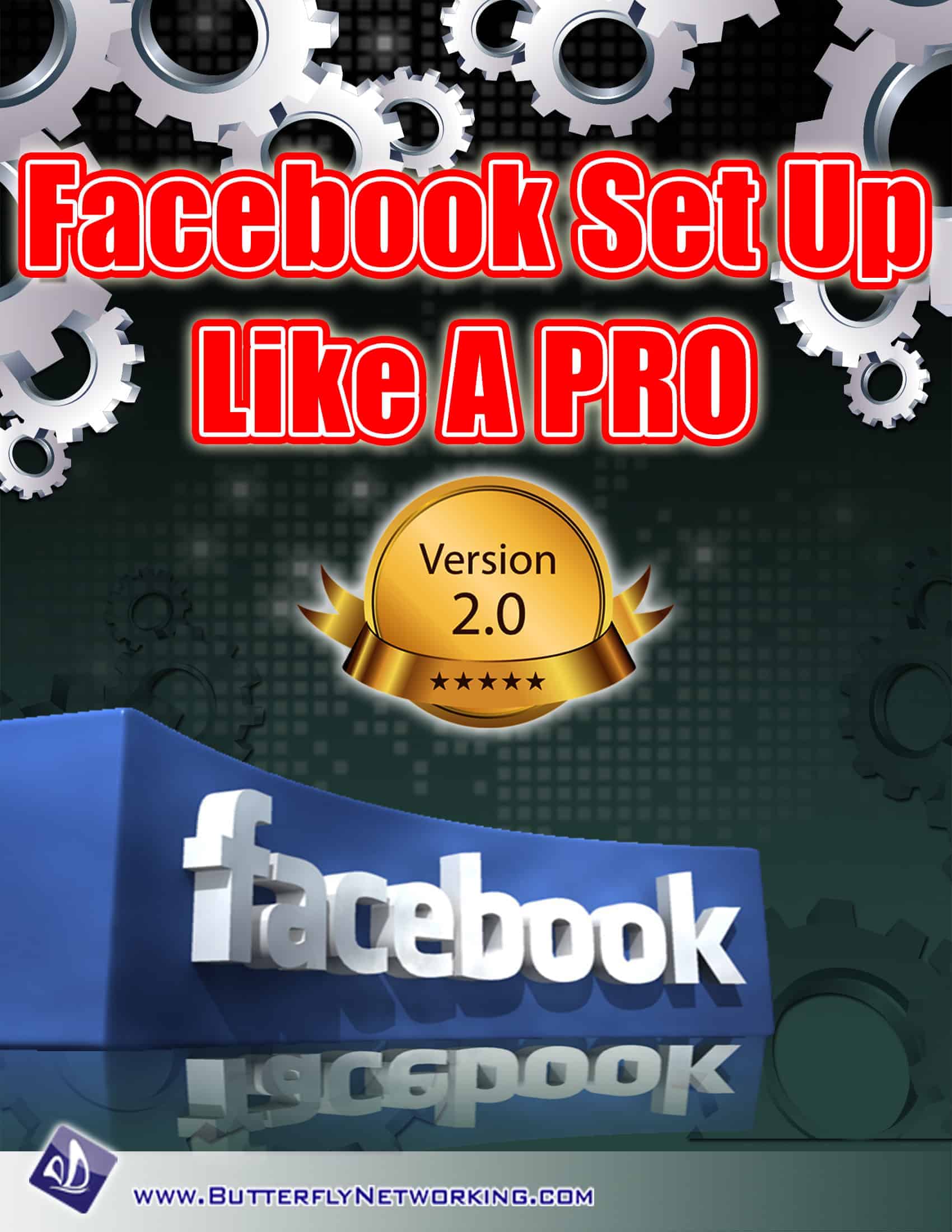How to Bridge the Marketing and Sales Gap With Content
ByIf B2B marketers want to solve buyer’s problems and encourage lead generation, they’ll have to publish more content than ever before. But after the prospect is converted into a lead, organizations often end their marketing principles.
B2B Marketers are usually confined to converting a lead after which a sales rep follows a totally different procedure to qualify and sell.
Generally, people tend to drive all their content marketing efforts to generate leads which can create a major marketing and sales gap. A study reports that a mere 10% of sales and marketing people across the globe agree that there is alignment between the two sectors.
For your content strategy to be strong, it is essential that there exists a perfect alignment between these two teams.
The following graph properly sums up the importance of reducing the marketing and sales gap for brand awareness and increasing performance.
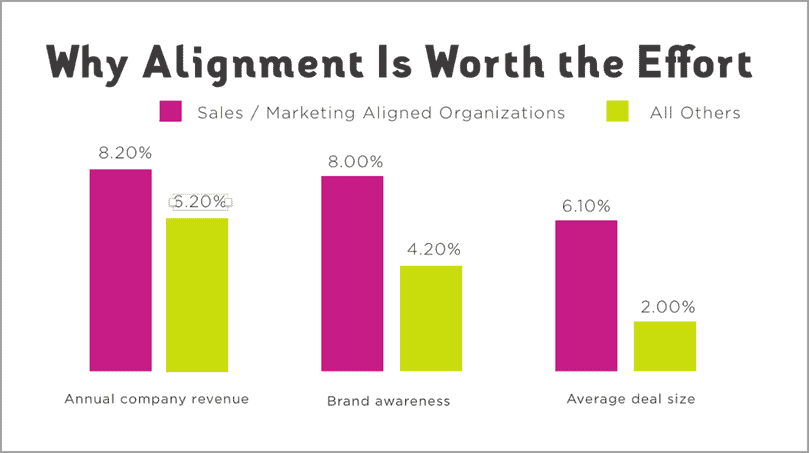
Image Source: weformulate.io
So how do you go about it? Read on to find out.
How content marketing can help reduce the marketing and sales gap
Many marketers have a B2B demand generation myth that an increase in leads will automatically translate into more business and more revenue. If you’re able to collect highly qualified leads, you can still generate higher revenues even if you generate fewer leads.
Your business marketing team must formulate a lead generation strategy focusing on getting the sales team a higher number of qualified leads. If you want your leads to make a purchase, you must ensure that they’re closer to closing a deal with your business.
The more topics and keywords your lead searches for indicates their intention to make a purchase. For instance, if someone is looking for legal advice, they’ll search for phrases like ‘consult a lawyer’ or ‘find a lawyer’. If there are not ready to make a purchase, they’ll likely just try to understand particular sections of law.
When it comes to content marketing, you should distribute consistent and valuable content to your target audience to encourage profitable customer action. Your sales tools such as ROI assessments, pricing sheets, demos, collateral, etc. should be included in your content strategy. Your sales rep uses these sales tools to deliver personalized content to prospects to encourage them to make a purchase.
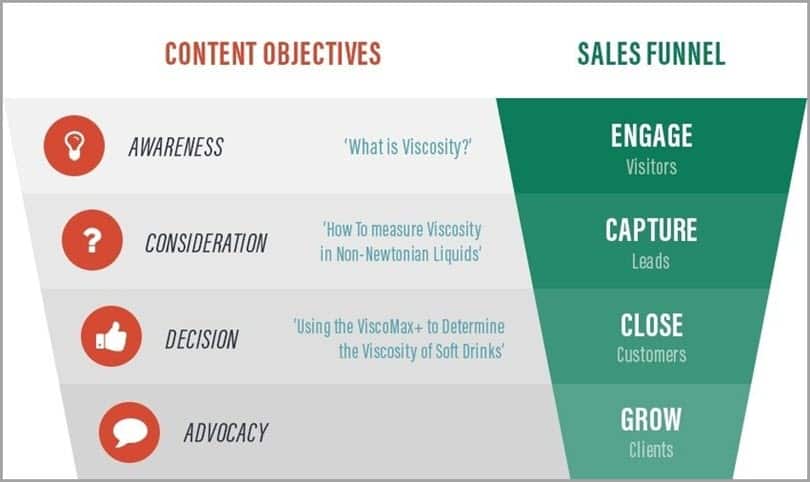
Initiate sales-oriented goals
The immediate goal of your sales team is to generate more sales, higher profits, and better revenue. Creating content is not a part of their day to day job. This can often make them confused about your marketing team’s content creation efforts.
Content marketing metrics driven by sales-oriented goals are very effective in examining and displaying content marketing value. You must ensure that your sales team targets and the content marketing goals are in sync. These goals will help your marketing strategies in generating more revenue and conversions.
One of the key benefits of B2B content marketing is a substantial increase in sales and revenue. As per the survey conducted with 700 B2B content marketers in North America, it was found that sales and revenue enhanced by 8% in just 12 months.
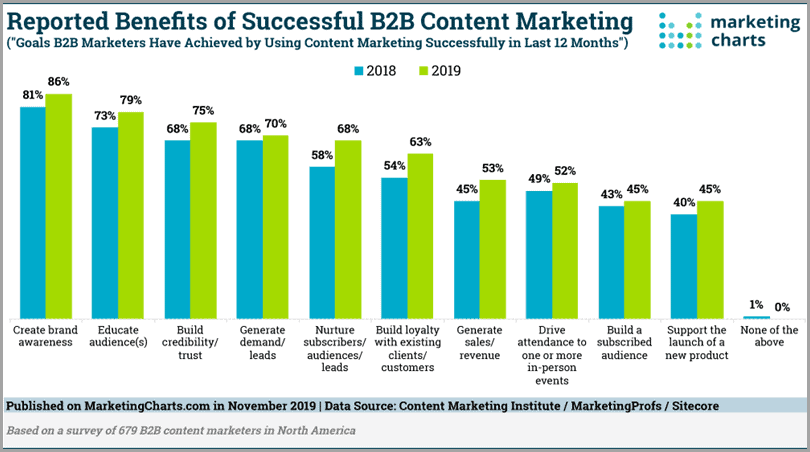
If you want to generate quantifiable ROI, it’s better positioned for your marketing strategy to concentrate on conversions and not only on lead generation.
If one of your blogs goes viral, you should ask the following questions:
- How many made a purchase?
- How many booked a sales call?
- How many inquired about your brand’s services and products?
Connect marketing and sales teams to enhance your customer persona
A customer persona is one of the numerous tools marketers use to produce effective content. Your sales team will be more directly involved with prospects. Naturally, they’re more aware of the issues they face and also their solutions. Marketers can take advantage of this to produce more personalized content for prospects and guide them through the funnel.
By communicating with your sales team, you can enhance your customer personas with more detailed insights. The more details these insights contain, the more personalized content your marketing team can produce.
For instance, instead of forming assumptions about your prospects, your sales team can directly provide you with data to refute or confirm your assumptions. Data-driven personalization will offer your business with more accurate sales predictions.
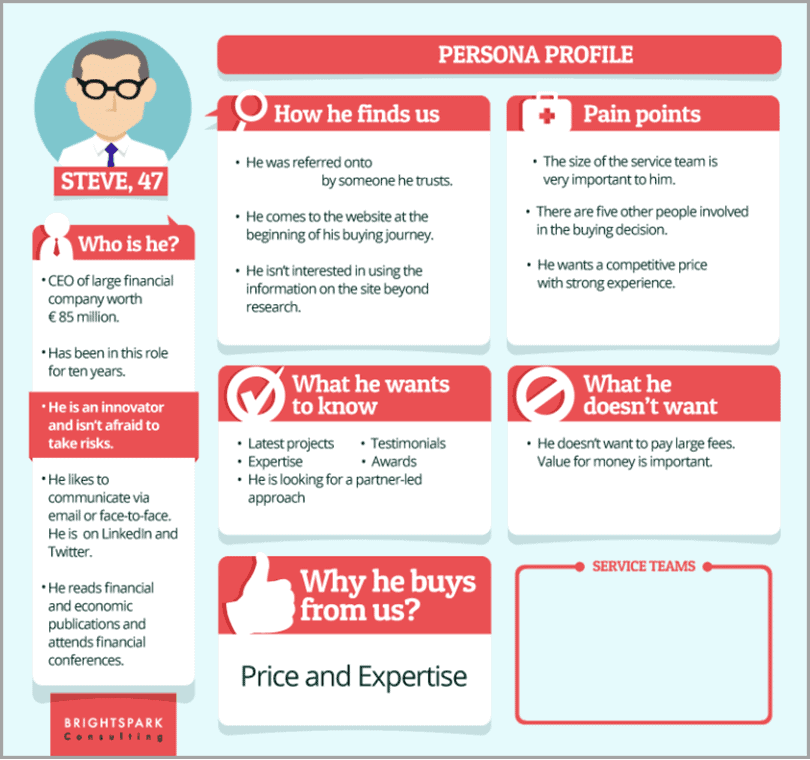
Design content to reduce the pressure on the sales team
After some research by their decision-making teams, B2B buyers refer to your sales team. In this stage, sales teams are aware of producing valuable content that’ll influence prospects.
According to a survey, 73% of respondents rated the role of a sales account manager as ‘highly stressful’. Thus, it’s suggested that you balance out your sales and marketing teams for organizational productivity. Your marketing team should design the bottom of the funnel content to motivate your sales team’s process.
This will generate various kinds of content like case studies that display your enterprise’s success with a particular client. An infographic can also help in generating leads after or before they connect with your sales team.
Your marketing team could design detailed guides displaying each issue that your product or service solves for your clients. At the final phase of decision making, such guides can be influential on your prospects.
From the graph below, there is a huge contrast on whether businesses are effectively reducing the marketing and sales gap. According to the graph, a majority of respondents don’t feel that the teams are aligned. 31% of C-level executives contend that these two teams are perfectly aligned, whereas just 17% of individual contributors and managers feel the same.
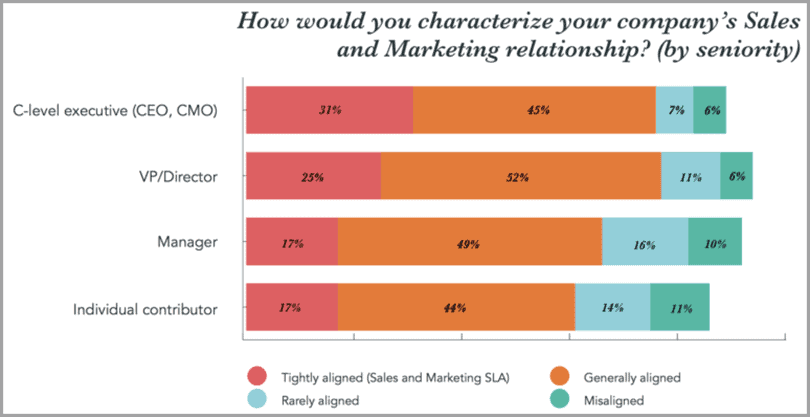
Image Source: HubSpot
You must ensure maximum collaboration between your marketing and sales teams to produce personalized content. It heightens the probability of conversion by effectively targeting every member of the prospect’s decision-making team.
via How to Bridge the Marketing and Sales Gap With Content
What online marketers can learn from creating empathy in the sales process
By Mars Dorian, {grow} Contributing Columnist
Selling your ‘stuff’ in person is hard, hard work … especially when your product is an artwork and thus highly subjective in value.
But during the last months, I’ve learned tons about the process, which is helping sales for me and my artist peers. I’ve learned the value of embedding empathy in the sales process.
Below, I want to share three examples of closing sales that have taught me to be a better marketer online:
Use the the ‘two drawers’ mentality
Vera F. Birkenbihl, the late German entrepreneur and productivity coach, once introduced the two drawer analogy in her books. It’s a simple mental model where you put every statement of a business talk into two mental drawers:
- What’s in it for them
- What’s in it for you
This simple model works incredibly well, whether you’re buying or selling.
For example, if someone wants to sell a product to you, you use the two drawer model to determine how many of his sales arguments benefit him or you. The best deal then benefits both parties equally.
I used the same model to seal an artwork sale for a close friend.
A client wanted to buy one of her artworks worth a couple of thousand euros. He claimed the price was too high, and that he would definitely buy the work at a discount.
My artist friend soooo wanted the sale, but desperation is a deal killer.
Now, what to do?
If you discount your work, you risk reducing your artistic value, conditioning your customer to bargain and never accept the price you’ve set for yourself.
But if you straight-up deny your client’s request, you can easily lose the sale.
I used the two drawer mentality:
- What does the client want: Making sure the artwork is affordable
- What does the artist want: Selling the artwork for the full price
The solution was dead simple: Allow the client to buy the artwork in installments over a couple of months.
This way, he was easily able to afford it while my artist friend received the full sum without discounting her value.
Foster genuine customer care
I’m just about to finish my first art catalog, featuring the best 32 pieces of my work.
It’s an expensive venture, especially if you want thick and premium paper and vibrant colors.
So I was looking for a printing company in Berlin and checked many outlets offering competitive prices. I picked one company that an artist friend had recommended and promptly showed up at their Berlin HQ to pick up samples.
Unannounced, by the way.
One of the office workers quickly approached me, looking like a Berlin hipster including a lumberjack’s beard and skater cap.
I thought he was going to ask if I was lost but instead inquired about my project.
He generously shared valuable tips, including which paper format to pick and what kind of binding I should use and answered every question without being PUSHY or urging me to close the sale.
We ended up talking for almost 40 minutes before I left their little office with a couple of sample prints and brochures and a hurting head full of info.
Back at home, I thought: What a great little company, taking so much time to explain their stuff.
But after filling out my printing order online, I discovered that they were one of the BIGGEST printing companies in Berlin, which wowed my mind.
A giant company with the care and friendliness of a small, local biz.
It proves one of Mark Schaefer’s core statements that the most human company wins.
Supporting your client’s story
Selling artwork in person is hard work. I’ve learned the bitter lesson when I single-handedly screwed up a near-hit sale.
Here’s what happened:
During my last exhibition at a former military horse barn, a woman approached me with a glass of wine, raving about a particular artwork of a slob:
She explained her interpretation of the guy, involving a heavy political message which I hadn’t intended.
Being truthful, I quickly revealed my own intention behind the work, which contradicted her ‘story’.
You should have seen the gravity pulling at her face.
The conversation died in fewer than 30 seconds. Her smile vanished as my story obviously didn’t grab her as much as her own. She excused herself and shortly afterward, left the exhibition in her shiny Benz.
Lesson: When a potential client explains their reason for liking your work, don’t contradict them. Their interpretation and reasons trump yours. Adapt your approach instead, using empathy to seal the deal with their story.
via What online marketers can learn from creating empathy in the sales process









